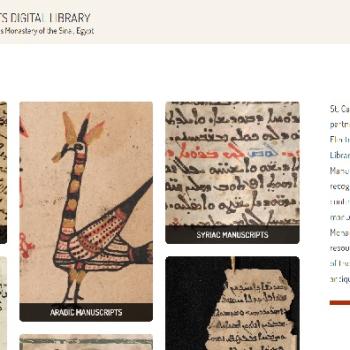I am delighted to have been given the opportunity to review the Logos version of an incredibly helpful Syriac language-learning tool, Lexical Tools to the Syriac New Testament
by George Kiraz. I used the print edition of this book when learning Syriac, and found it very helpful. It incorporates learning aids of a sort that will be familiar to students of other ancient languages – for instance, Bruce Metzger’s Lexical Aids for Students of New Testament Greek
which many of us used when learning Greek. The volume provides lists of words by the frequency with which they appear in the New Testament, thus allowing one to learn the most commonly-occurring words first. It also includes lists of words which have identical consonants and which are thus liable to be confused, detailed verbal paradigms, and many other useful helps for the student who hopes to make fast progress in learning Syriac, and to have a handy resource to turn to for answers to questions about grammatical rules.
A book like this is not a substitute for a manual or textbook, or a grammar, but it is one that provides a natural complement to such volumes, and it will assist the student to make faster and more effective progress.
The Logos edition has one immense advantage over the print edition. The latter is a seriously oversized book – not a thick one, but one with large dimensions in the other directions. The Logos version can be pulled out on one’s iPad and so it fits wherever one’s iPad fits. I distinctly remember using the print edition less frequently than I would have liked to, precisely because its size made it inconvenient to bring with me in many instances.
The Logos edition is not without some shortcomings – there are some spelling errors that I spotted in Syriac vocabulary list. The ones that I noticed, perhaps ironically, occur in what should be some of the more familiar words in Syriac, such as the words for Messiah/Christ (entry 35, which should be ![]() ) and bread (entry 181, which should be
) and bread (entry 181, which should be ![]() – see the comparison at the end of the review). It is perhaps fortunate that these are words which students with knowledge of other Semitic languages (for instance Hebrew) might well be able to work out for themselves have been misspelled, since the roots should already be familiar to them. And presumably a digital resource can be corrected in ways that a printed book cannot once it is printed and sold, and so errors of this sort should not put one off purchasing the book for the Logos platform.
– see the comparison at the end of the review). It is perhaps fortunate that these are words which students with knowledge of other Semitic languages (for instance Hebrew) might well be able to work out for themselves have been misspelled, since the roots should already be familiar to them. And presumably a digital resource can be corrected in ways that a printed book cannot once it is printed and sold, and so errors of this sort should not put one off purchasing the book for the Logos platform.
It is also worth mentioning as well that, for whatever reason, the preview of the book on the Logos website uses the Estrangela script, while the actual volume uses the Serta script used in most modern print editions of the Peshitta New Testament.
Another quirk that is worth mentioning with respect to the functionality of the book on the Logos platform is that sometimes a Syriac word at the bottom of the screen in the word lists will fail to display. It is not in fact missing – if one moves to another page and then returns, the word appears. This seems rather to be a result of the formatting, which spreads the information from each oversized page over multiple pages to allow it to be easily readable on the iPad.
These issues are, as I have already said, likely to be corrected by Logos. And the electronic edition has some features that make it so much easier to use than the print edition, such as for instance hyperlinked references. If you see a word in the index and want to jump to it in the book, it involves only a click, not scrolling in the manner that one might flip through the printed volume. And so, on the whole, the Logos version is significantly more useful than the printed volume.
Syriac is an important language for the study of the history of Christianity in its own right, and it is also arguably the most straightforward form of Aramaic for those familiar with the New Testament to learn, since one can improve and refine one’s knowledge of the language by reading the Syriac New Testament. Yet relatively few New Testament scholars learn it. And so I recommend this Logos resource, hoping that it will prove to be a popular one, and will contribute to a more widespread knowledge of Syriac by those working in my field!















